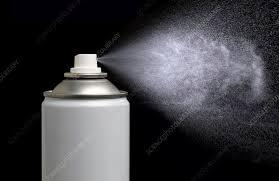-
When everyday product performance hits the headlines, people pay attention to the parts beneath the surface. An Aerosol Can Valve sits at the heart of how a product dispenses, how safely it stores, and how usable a finished can becomes for consumers and service teams. Choosing the right valve for a given application is therefore more than a specification decision; it influences user experience, supply chain handling, and regulatory clarity.
Start with the function you need. Some valves are built to deliver a steady fine mist for personal care and household sprays. Others are designed to direct a thicker stream or to work with tubes that reach deep into a container for targeted dispensing. Think about nozzle geometry and output pattern before worrying about material choices because the spray character often drives other selection decisions, including actuator shape and seal design.
Materials and corrosion resistance matter when the formulation includes aggressive ingredients or when the product will be stored in challenging environments. Valve components can be made from different metals and elastomers and the choice of a particular rubber or seat material affects how long the seal holds and how cleanly the valve returns to closed posture after use. Matching material compatibility to the product formulation reduces seal wear and limits maintenance or warranty friction down the line.
Assembly style and interface type are central to fit and interchangeability. Some valve designs rely on a threaded or mechanically secured neck that mates with a can opening while others use crimp style seating. The assembly approach determines how secure the connection is during transport and how easy it is to service or replace a valve in specialty lines. When procurement teams favour a commonly used interface, spare parts logistics and field repairs become simpler for end users and service providers alike.
Sealing and leak control are non negotiable for safety conscious brands. Different sealing approaches can include layered seats, integrated sealing rings, or specially formed rubber elements that compress to close. Many manufacturers run air tightness and pressure checks during production to ensure that every valve leaving the line meets containment expectations. These quality steps reduce the likelihood of slow leaks that affect shelf life and help avoid returns caused by packaging failures during shipping.
Flow control and metering features matter when dosage or spray consistency is important. For formulations that require a precise shot or an even coat, valves with integrated metering passages or calibrated orifice sizes give repeatable output and reduce user confusion. For other products a robust on off action with a simple actuator offers intuitive use and straightforward maintenance. Choosing a valve that supports the intended user action ensures the brand promise is met each time the product is used.
Specialised features broaden application possibilities. Some valves are made to work with attached tubes that reach into viscous contents while others include check features that prevent back flow. There are valve styles that prioritise quick actuation for frequent use and others that are engineered for a slower, controlled release. Suppliers who accept custom requests can tweak tube length seat hardness and thread details to match unusual formulations or packaging layouts.
Production consistency ties all of these choices together. Valves built on automated lines with routine inspections show less variation between units. Automated processes reduce manual handling and help maintain consistent material placement and seating dimensions. Factories that implement visual inspections and verification steps before shipment can demonstrate to buyers that their product met defined acceptance criteria at the point of packing. These production controls give procurement teams confidence when they place larger orders or when they request specific finishing tolerances for private label runs. Bluefire Cans
Compatibility with accessory parts and actuators is a practical question that affects retailers and end users. When a valve shares an interface with widely used caps or spray heads, stocking replacements and spare actuators is easier and cheaper. For specialty products or niche markets, custom actuators may be warranted but those choices should be balanced against downstream service needs. Clear supplier guidance on matching actuators and caps reduces guesswork at the manufacturing line and in after sales support.
Testing and traceability shorten problem solving time. Batch marking and simple production logs let a brand trace an issue back to a particular line or inspection batch. When a supplier can show which tests each valve passed and when those tests took place, recall scope and corrective action become far more precise. That capability also reassures procurement teams that the supplier treats quality as a measurable process rather than a marketing claim.
Sustainability and end of life are entering the selection calculus. Valve designs that simplify cleaning or that avoid problematic coatings support recycling and reuse programs. Materials chosen for durability that still allow recovery of base metals at disposal reduce the environmental footprint of packaging. Brands that balance functional performance with recyclability reduce lifecycle headaches and align with growing public attention to circular packaging practices.
Field feedback matters. Service technicians, rental fleets and heavy users often spot recurring issues such as actuator wear or nozzle clogging before general consumers do. Suppliers who maintain open lines for user feedback can adapt material choices or geometry in future runs to reduce common complaints. That iterative product improvement loop keeps product lines relevant and reduces post launch support costs.
Choosing the right valve begins with clear specification. Define the intended spray character, the likely use environment, the level of interchangeability you require and any traceability needs. Talk with suppliers who can show production controls, testing records and a willingness to customise where it matters. That collaborative approach yields a valve selection that supports product performance, handling safety and downstream serviceability. If you want to review options for valve customisation, production controls and application guidance tied to aerosol components visit https://www.bluefirecans.com/ .
